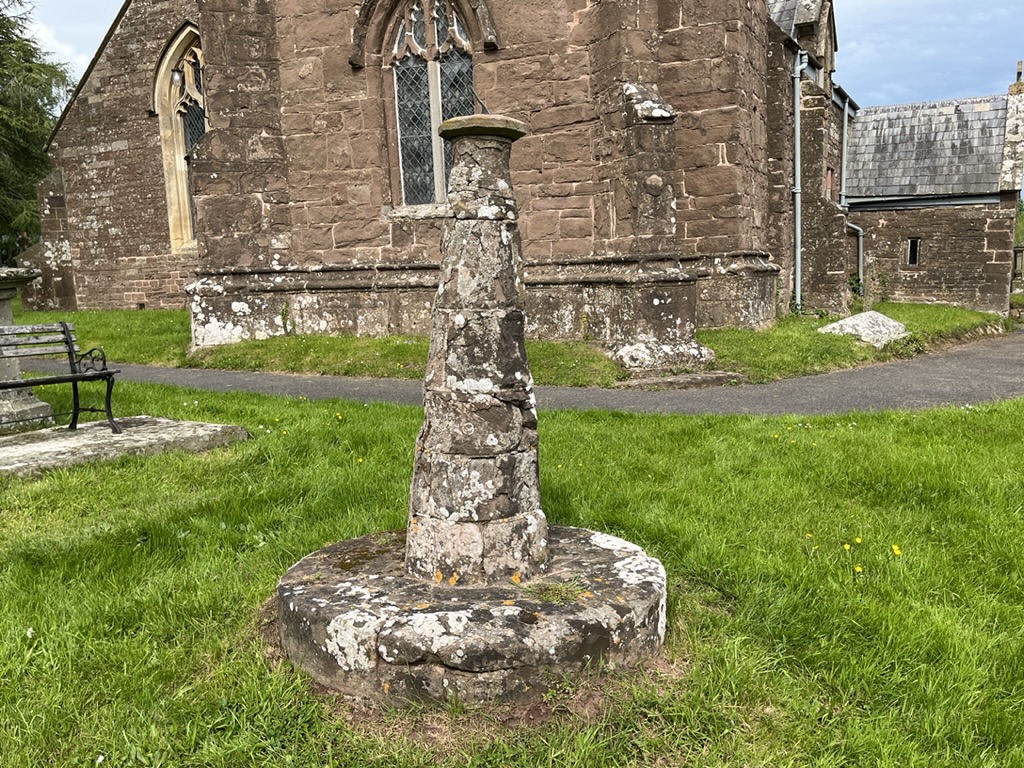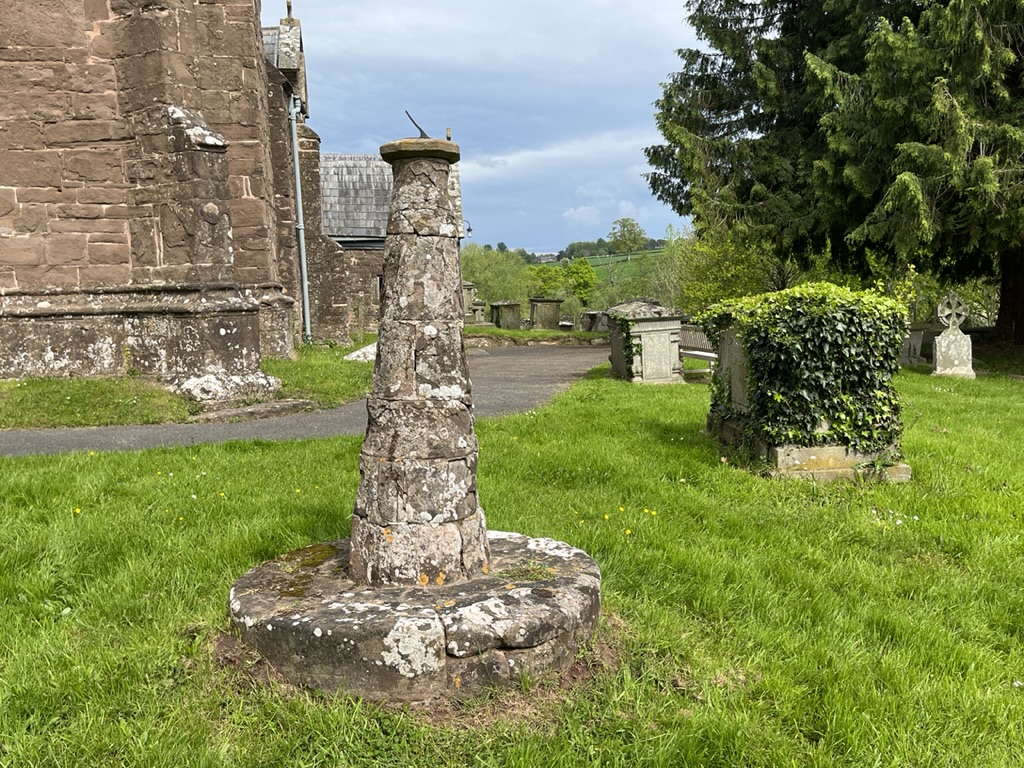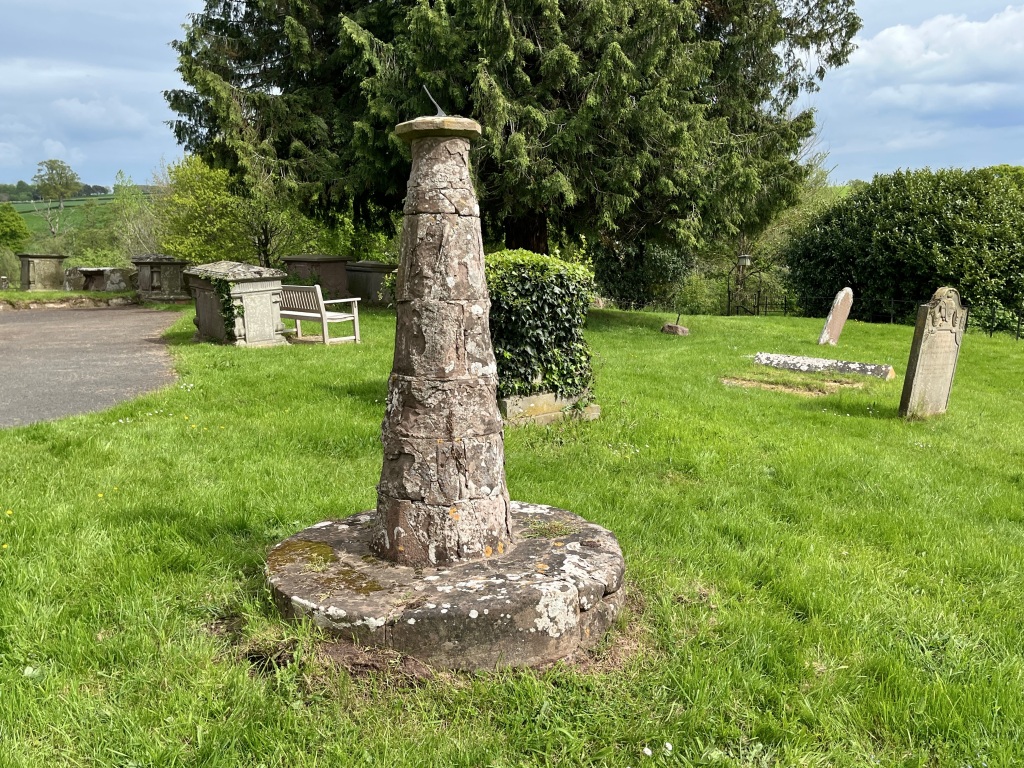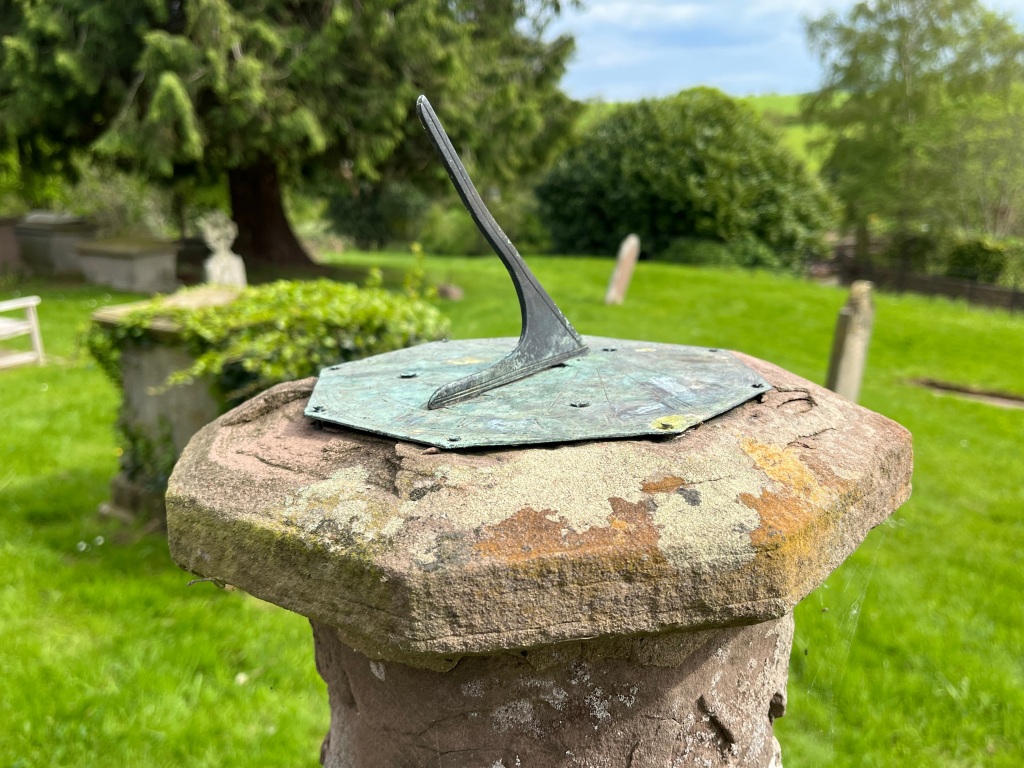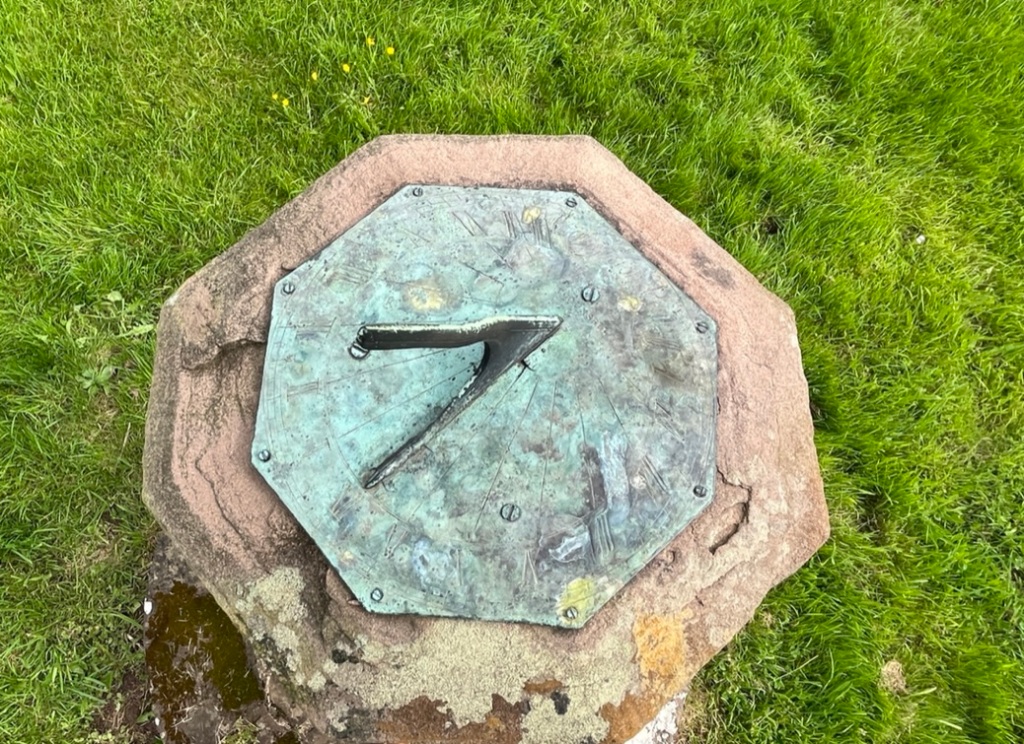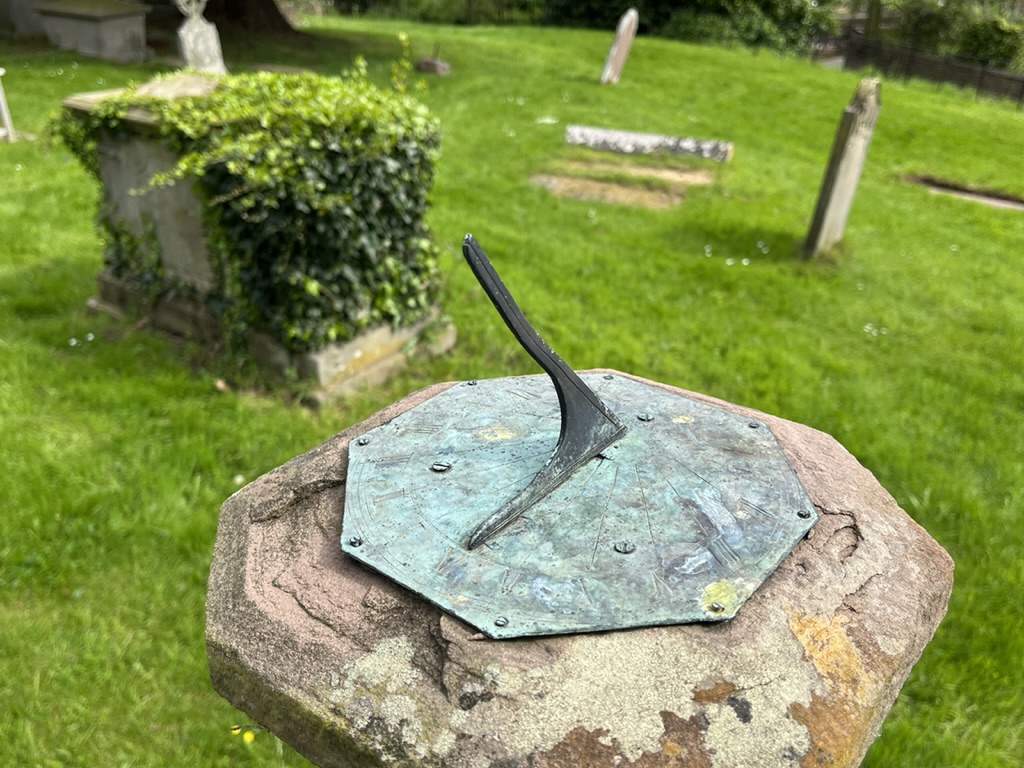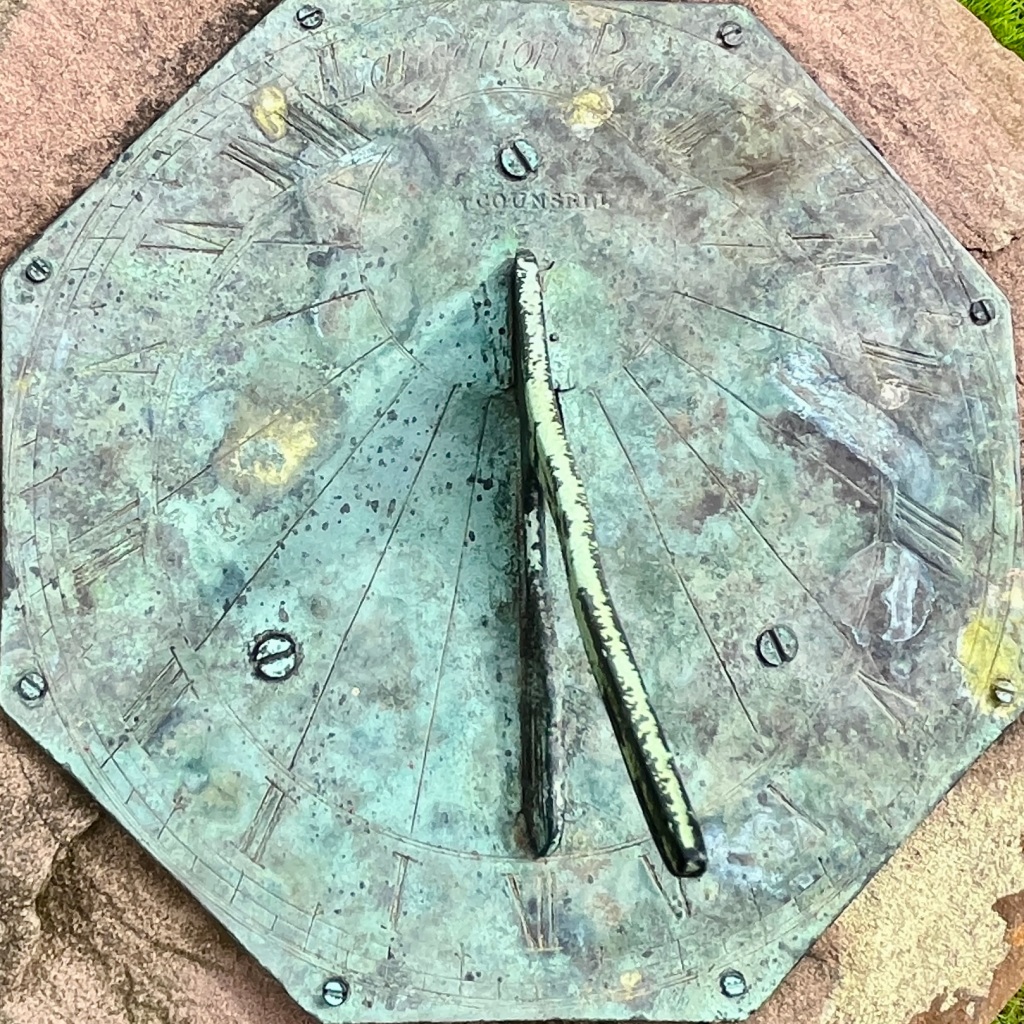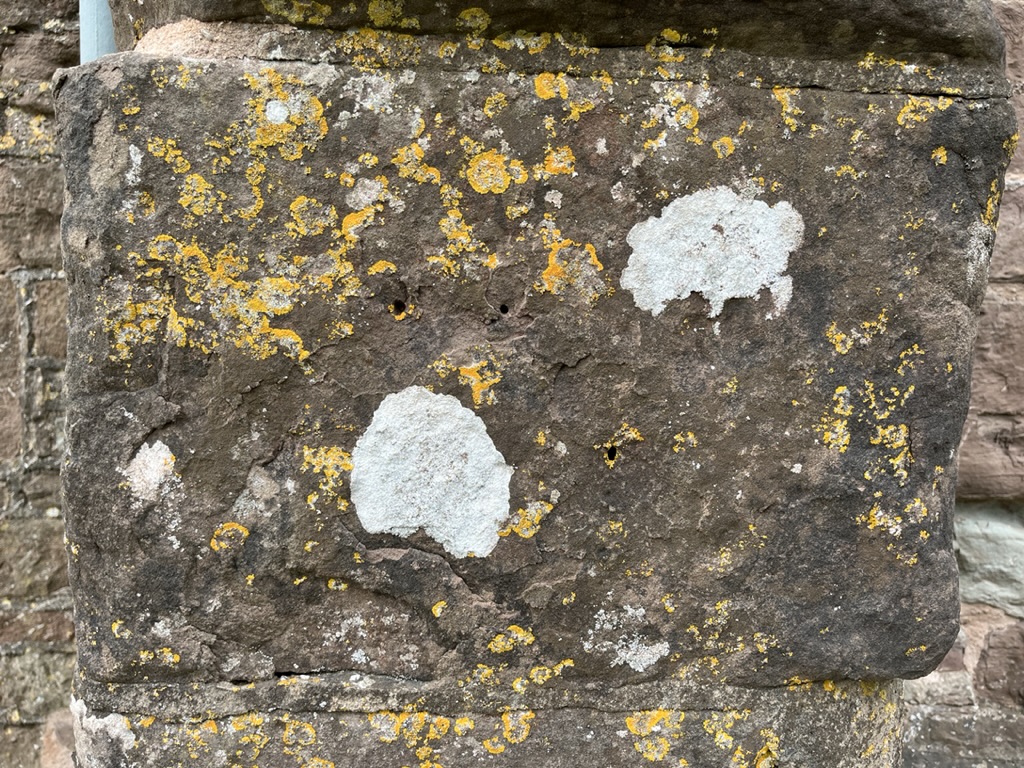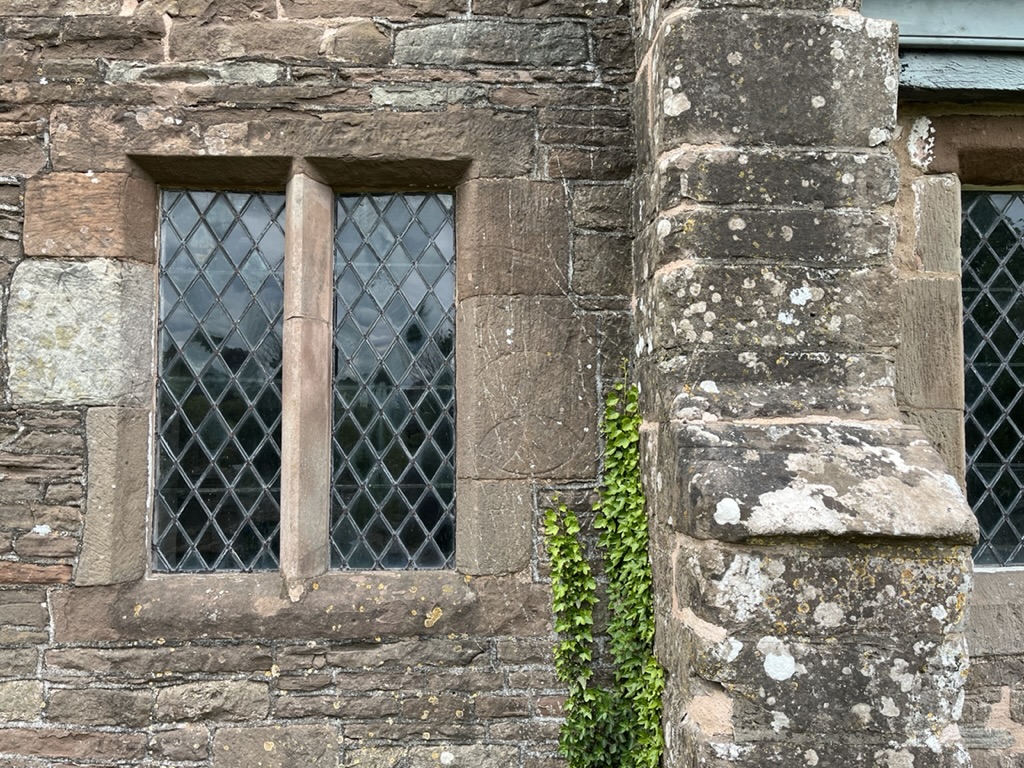
ST JAMES . WIGMORE . HEREFS
GRADE I † On a hilltop overlooking the village, next to the ruins of Wigmore Castle. Saxon origins with good remains of herringbone brickwork visible; early Norman nave c1050. Extended / altered / restored from C14 (tower) on. An impression of a fortified church, esp. tower at W end. 9m from Ludlow. 52.3166 / -2.8626 / SO412690

DIALS
DIAL 1
Dial 1 is on the SE face of the buttress in NE corner of the chancel (ie at the back of E end of the church), so at some stage re-sited as of little use for its intended purpose it its current position. There are 2 lines radiating from the style hole in the dial stone. In canonical terms, the deeper cut line equates roughly with Nones, and the upper line with Vespers, an unusually specific emphasis on the afternoon and evening, with no line for noon or earlier.
I wondered if, when relocated, the dial stone was rotated by 90º anticlockwise. If ‘corrected’, the short line would be the noon line, and the deeper-cut line would mark Tierce. But it is not very convincing and probably I am overthinking a very simple dial.



DIAL 1 ROTATED 90º

BSS DIAGRAM

DIAL 2
Dial 2 on the wall of S aisle is similarly simple with 2 lines only. One does not actually meet the gnomon. Of the sort that can be read more easily in B&W


DIAL 3
Dial 3 is low down on chancel, S doorway. There are 7 pocks in a semicircle, with the gnomon hole top centre. When I visited there were various obstacles in the supposed location. I found nothing to match the diagram below, and having moved a large planter to one side, this is the nearest pattern I could find.


SAXON HERRINGBONE PATTERN

GSS Category: Scratch Dial
All photos Keith Salvesen except Dial 2 (BSS records)



